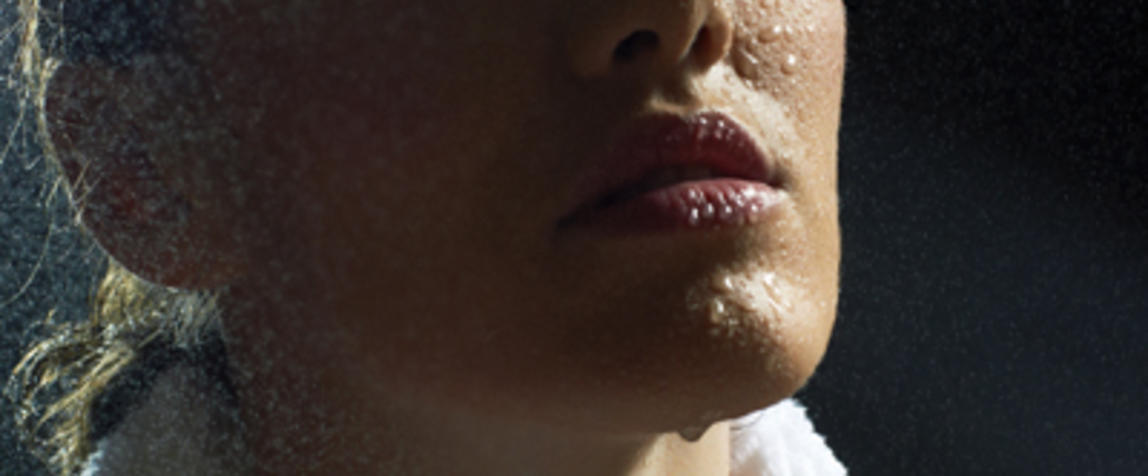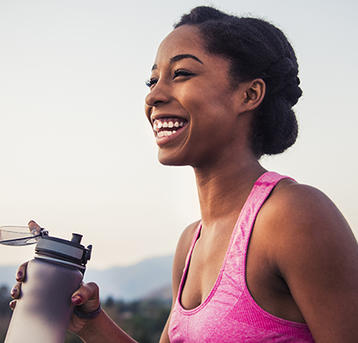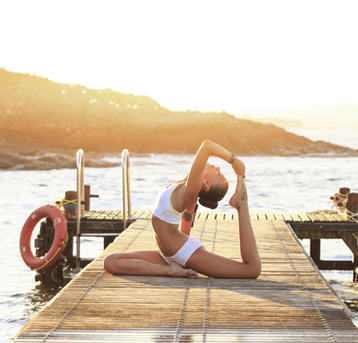Humans are fascinating creatures – and we're not talking about their ability to scream over a new handbag or cry when a stranger gets dumped on television by a rose-wielding rope technician. Here, BD takes a look at 50 fun health facts that will have you discovering more about yourself than you probably ever wanted to know...
- People shed around 600,000 particles of skin every hour.
- Humans get new stomach lining every three to four days.
- Humans can do longer without food than sleep. -
- Just like with fingerprints, everyone has a unique tongue print.
- All of the hair follicles in humans are formed when a foetus is five months old. -
- Your nose can remember 50,000 different scents.
- In Australia, 37 per cent of women have some form of urinary incontinence. -
- Every square inch of skin on the human body carries approximately 32 million bacteria on it (but most are harmless).
- There is more bacteria in your mouth than there are people in the world.
- Feet can produce almost half a litre of sweat a day.
- Our livers have more than 500 different functions. - Blackmores
- If you saved up all of your saliva over a lifetime, you would be able to fill two swimming pools.
- Even though Australia is known to be a sun-kissed country, the majority of Australians are deficient in vitamin D. -
- We lose bones the older we get. Because bones fuse together as we grow, we begin life with 350 bones and end up with only 206 as adults.
- Of the 206 bones in the adult body, 106 are in the hands and feet.
- The brain is made up of 80 per cent water.
- People are approximately one centimetre taller in the morning than they are in the evening.
- The brain is much more active at night than during the day.
- The higher a person’s IQ – the more they are likely to dream.
- Hearing becomes less sharp after overeating.
- The acid in your stomach is so strong it is able to dissolve razorblades.
- A step uses 200 muscles.
- Bone is stronger than some steel.
- Milk is a great rehydrating drink, possibly the best. It contains water, carbohydrates for replacing energy, electrolytes like sodium, potassium, calcium and magnesium and protein for muscle and cell recovery. - Swisse
- Blondes not only have more fun but they also have more hair follicles: 100,000 is the average number of hairs on the head. A blonde will normally have the most hairs, with around 146,000 follicles. - Viviscal
- During a lifetime, the average human will eat around 27,215 kilograms of food – which is equivalent to approximately six elephants.
- Men have thicker skin than women, due to a greater amount of collagen. This is also why women are prone to wrinkles at an earlier age. - Swisse
- Vaginal dryness can affect any woman, however, it affects more than half of postmenopausal women aged between 51 and 60. - Pjur Med
- Around 17 per cent of women aged 18 to 50 experience problems with vaginal dryness during sex, even before menopause takes place. - Pjur Med
- Sneezes often exceed 160 kilometres per hour, while a cough can get up to approximately 96 kilometres per hour.
- Hair is the second fastest growing tissue in the body; only bone marrow is quicker. - Viviscal
- Across the globe, sexual intercourse is happening approximately 120 million times a day [side note: BD is intrigued as to how this statistic was measured].
- We get goosebumps when it’s cold because our hair follicles contract, causing our skin to bunch up and hairs to stand on end. - Viviscal
- Stress causes or complicates more than 90 per cent of diseases.
- The tongue is the strongest muscle in the human body, while the jawbone is the hardest bone.
- Bad dreams have been related to being in a colder room.
- Humans are the only animals that produce emotional tears.
- Research shows that people are more attracted to women and men with a well-defined limbal ring (the dark ring around your iris that separates the iris from the white of your eye). - Acuvue Define
- Close to 2.9 million Australian women have high cholesterol, which is approximately 33 per cent of all females aged 18 and over. - BetaHeat
- A tooth is the only human body part that is unable to repair itself.
- Pineapples could be your saviour this spring. Pineapple is a great source of bromelain, an enzyme with anti-inflammatory properties which can help decrease nasal congestion. - Swisse
- The body produces enough heat in 30 minutes to bring to the boil almost two litres of water.
- Hair is one of the most common types of forensic evidence. Hair cross-sections can be used to tell what race or ethnic origin you are, however, gender is one thing that cannot be identified by a hair strand. Hair also contains information on what has been through your bloodstream, including minerals and drugs. - Viviscal
- Most people lose between 50 to 100 hairs a day, which is considered normal hair loss. - Women’s Regaine
- Sudden cardiac death has been reduced by as much as 50 per cent in people with a modest intake of omega-3 fatty acids from fish rich in EPA and DHA such as salmon. - Huon Aqua
- Dimples are caused by the attachment of the human skin to muscles.
- Fish oil has been suggested (in the right doses) to be equal in effectiveness to some antidepressant medications. - Bioceuticals
- An interesting one for watchers of Game of Thrones... A human head remains conscious for approximately 15 to 20 seconds after being decapitated.
- Hair can be flat, oval or round shaped. People of Asian descent have very round-shaped hair. People of African descent have very flat-shaped hair. People of European descent have oval-shaped hair. - Viviscal
- Your body is able to survive without a large fraction of its internal organs. In fact, you would still be able to live if you lost your stomach, spleen, 75 per cent of your liver, 80 per cent of your intestines, a kidney, a lung, and most organs in your pelvic and groin area.




